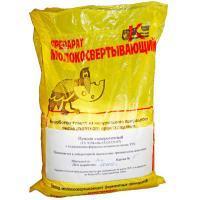Lokomotiv - industrial cooperation. More than 60% of foreign trade of the Bryansk region falls on Belarus
Yulia Ganakova HEAD of the Analytical Department of the National Center for Marketing and Price Research Belarus has traditionally been a key trade and economic partner of the Bryansk region: more than 60% of the region’s total foreign trade turnover is formed at the expense of our republic. The top three are also Kazakhstan and CHINA , whose shares, however, do not exceed 12% and 8%, respectively. The economic situation in the Russian region is worthy of the attention of analysts: the main industries of the Bryansk region are manufacturing, the agricultural sector, wholesale and retail trade, and auto repair. Among manufacturing industries, the driver of economic development is mechanical engineering: food, railway, agricultural, oil and gas, automotive. And Belarus sees potential for developing relations precisely in this direction - both in terms of supplies and in the case of organizing joint productions. Prospects are also visible in the agro-industrial complex and science, construction and stock trading. The head of the analytical department of the National Center for Marketing and Price Research, Yulia Ganakova, helped the BELTA correspondent to assess the horizons of Belarusian-Bryansk cooperation.
The strongest ties with the Bryansk region were established by the Gomel region of
Belarus - the main partner of the Russian region in foreign trade, however, the Belarusian regions make an unequal contribution to achieving this high indicator. Thus, the Gomel region accounts for 35% of the republic’s total trade with the Bryansk region. No other region of the country has such a decent percentage. The list of goods supplied from Belarus to the Bryansk region largely corresponds to the top 20 most imported items by the region as a whole.
These include machines for harvesting and threshing agricultural crops, plastic products for transportation and storage, bulldozers, graders, excavators, loaders, spare parts and accessories for machines and special equipment, pebbles, gravel, crushed stone and crushed stone, railroad cars and equipment roads, chipboards, OSB and their analogues, trailers and semi-trailers, industrial cooking equipment, wallpaper, ferrous metals, bicycle tires, pumps, tractors. The Bryansk region also buys a lot of food abroad: cheeses andcottage cheese , condensed MILK and cream, butter , apples, cattle MEAT , confectionery. “A typical agreement on the development of bilateral relations between Belarus and the Bryansk region in trade, economic, scientific, technical and cultural vectors was concluded back in 2000,” said Yulia Ganakova. “The Russian region signed regional agreements on cooperation in a variety of areas with each region Belarus. However, in the case of the Gomel region, the agreement on the development of relations was updated in May of this year. A plan of measures for the implementation of the latest agreements reached was also developed. Business relations between Belarus and this region of RUSSIA were also characterized by business visits last year. Bryansk region visited Belarus twice." Agricultural networks, transport engineering, construction industry and high-tech production. Where does the sphere of investment interests lie? The expert notes: in order to determine the prospects, you need to have a good understanding of the needs that the economy of the Bryansk region experiences, and only then, correlating them with the capabilities of Belarus, choose how the republic can be useful to the Russian region in each specific case. The head of the analytical department listed six sectoral priorities of the investment policy of the Bryansk region. The first is the development of the agro-industrial complex and agrilogistics network. The most promising areas for attracting private investors, according to the specialist, are the creation of a selection and genetic center for the reproduction of dairy and beef cows, the development of breeding centers and the creation of wholesale distribution centers and modern specialized storage facilities.
Number two on the list of priorities is expanding the production base of transport engineering. Promising directions in this case are the expansion of production of railway rolling stock at the Novozybkovsky Machine-Building Plant and the production of freight mainline diesel locomotives at the facilities of the Bryansk Machine-Building Plant. As Yulia Ganakova clarified, the Russian government has approved a strategy for the development of transport engineering for 2030, which provides for the creation of joint projects with a high level of localization in the country. In this regard, the next direction where a significant amount of investment is directed in the Bryansk region is the development of industries related to mechanical engineering. According to the expert, expanding the production chain and strengthening the localization of the engineering industry involves the development, first of all, of the electronics industry. The production of uninterruptible power supplies and additional battery modules, and the production of microelectronics products are also considered as promising areas.
The fourth investment priority is the development of transport and logistics, integration into federal transit corridors. A promising vector here is to attract investors to the implementation of projects to create a transport and logistics center of interregional significance and transport and logistics centers of regional significance in the border and transit areas of the Bryansk region, for example in the Novozybkovsko-Klintsovsky industrial region.
Thanks to the presence of a rich mineral resource base in the Russian region (construction and quartz sand, chalk, peat, clay, marl are mined here), the construction industry is actively developing in the Bryansk region. it is not surprising that investors have identified as priority number five the modernization of the construction industry, increasing the volume of housing construction, and implementing projects in the housing and communal services sector. Analysts took into account the high level of deterioration of the municipal infrastructure of the Russian region, which on average for the region is more than 50%, and identified as a priority of investment policy the attraction of private investors to the implementation of projects in housing and communal services in the format of public-private partnership.
Finally, the final (but not least important) sectoral priority of the investment policy of the Bryansk region is the creation of innovative high-tech industries. The emphasis in this case is on the chemical industry, forestry complex and information and communication technologies. In particular, in the chemical industry, priority areas for attracting investors are the production of mineral fertilizers, the pharmaceutical industry, as well as the production of plastic products, tires and rubber products, paints and varnishes and synthetic fibers. A promising niche in the timber industry is the production of furniture and wood products. The Russian state program "Digital Economy" also dictates the need for investment support for start-ups and small and medium-sized businesses in the development and implementation of digital technologies.
Prospects for Belarus
“Given the developed sectors of the economy of the Bryansk region, Belarus and the Russian region are strengthening trade and economic relations through the expansion of joint production, as well as through cooperation in the agro-industrial complex, science, and construction,” emphasized the head of the analytical department.
First, the expert focused on the results achieved by the partners in creating joint ventures. One of the successful industrial integration projects is the Belarusian assembly production of Gomselmash products on the basis of Bryanskselmash, the main activities of which are the production and sale of agricultural machinery and spare parts for it, as well as warranty and service maintenance of its products. Yulia Ganakova added that the company plans to expand production by producing harvesting combines.
Another major joint project in this Russian region for the Belarusian side was cooperation in the production of special equipment of the domestic brand "AMKODOR" at the AMKODOR-Bryansk enterprise, which, by the way, is included in the list of backbone enterprises of the Bryansk region and is one of the largest manufacturers self-propelled vehicles in Russia. According to the expert, the Russians plan to expand production by producing municipal vehicles based on Belarusian chassis.
“Belarus has also expressed its readiness to supply emergency and fire-rescue equipment, medical vehicles, buses and trolleybuses, high-tech equipment from machine-tool enterprises to the Bryansk region,” noted a representative of the National Marketing Center. “The issue of supplying equipment from machine-building enterprises of Belarus on terms of preferential financing and leasing".
Belarusian-Bryansk cooperation cannot exist without agriculture. Taking into account the high degree of development of the agricultural sector of both sides and the fact that the Bryansk region is one of the leaders in Russia in terms of yield of key crops, in particular rapeseed and corn, agricultural technologies, supplies of elite seeds and agricultural machinery are in demand in the region. In the Bryansk region, cattle are also bred in large quantities and of high quality . Agreements have already been reached, as Yulia Ganakova noted, on the supply of domestic compound feed and feed additives for farm animals to the Russian region.
“The relevant departments of Belarus and the Bryansk region are working on the issue of creating a cluster in the Bryansk region for the production of grain seeds, potatoes and fruit and berry crops. There are also plans to create a council for the introduction of modern technologies in crop production and livestock farming,” the expert added.
Yulia Ganakova sees certain prospects for Belarus in cooperation with the Bryansk region in construction. The Belarusian side has already expressed its readiness to participate in projects for the construction of social housing in the Russian region. Considering the growing volumes of construction in the Bryansk region, Belarus considers EXPORT supplies of elevators, as well as car parking systems that allow efficient use of space, promising. The expert noted that some Bryansk developers are already including in their house designs the possibility of using Belarusian elevators. The parties are also considering expanding the scope of joint road construction projects, projects for the construction and reconstruction of water supply networks.
Another direction in the development of Belarusian-Bryansk relations, in which experts also see prospects, is electronic exchange trading. According to the Belarusian Universal Commodity Exchange, the exchange trade turnover of Belarus and the Bryansk region is relatively balanced: transactions are concluded in both import and export directions. Domestic enterprises buy grain and oilseeds from Bryansk partners, while Belarusian enterprises supply lumber, cement and cellular concrete blocks to the Russian region.
“Interaction with the Bryansk region, of course, is not limited to the above,” Yulia Ganakova emphasized. “Our enterprises can independently study priority investment projects for the partner region and take an active part in them, based on their own capabilities. We should not discount the expansion volumes of exports of products for which we already have positive supply experience.”
The strongest ties with the Bryansk region were established by the Gomel region of
Belarus - the main partner of the Russian region in foreign trade, however, the Belarusian regions make an unequal contribution to achieving this high indicator. Thus, the Gomel region accounts for 35% of the republic’s total trade with the Bryansk region. No other region of the country has such a decent percentage. The list of goods supplied from Belarus to the Bryansk region largely corresponds to the top 20 most imported items by the region as a whole.
These include machines for harvesting and threshing agricultural crops, plastic products for transportation and storage, bulldozers, graders, excavators, loaders, spare parts and accessories for machines and special equipment, pebbles, gravel, crushed stone and crushed stone, railroad cars and equipment roads, chipboards, OSB and their analogues, trailers and semi-trailers, industrial cooking equipment, wallpaper, ferrous metals, bicycle tires, pumps, tractors. The Bryansk region also buys a lot of food abroad: cheeses andcottage cheese , condensed MILK and cream, butter , apples, cattle MEAT , confectionery. “A typical agreement on the development of bilateral relations between Belarus and the Bryansk region in trade, economic, scientific, technical and cultural vectors was concluded back in 2000,” said Yulia Ganakova. “The Russian region signed regional agreements on cooperation in a variety of areas with each region Belarus. However, in the case of the Gomel region, the agreement on the development of relations was updated in May of this year. A plan of measures for the implementation of the latest agreements reached was also developed. Business relations between Belarus and this region of RUSSIA were also characterized by business visits last year. Bryansk region visited Belarus twice." Agricultural networks, transport engineering, construction industry and high-tech production. Where does the sphere of investment interests lie? The expert notes: in order to determine the prospects, you need to have a good understanding of the needs that the economy of the Bryansk region experiences, and only then, correlating them with the capabilities of Belarus, choose how the republic can be useful to the Russian region in each specific case. The head of the analytical department listed six sectoral priorities of the investment policy of the Bryansk region. The first is the development of the agro-industrial complex and agrilogistics network. The most promising areas for attracting private investors, according to the specialist, are the creation of a selection and genetic center for the reproduction of dairy and beef cows, the development of breeding centers and the creation of wholesale distribution centers and modern specialized storage facilities.
Number two on the list of priorities is expanding the production base of transport engineering. Promising directions in this case are the expansion of production of railway rolling stock at the Novozybkovsky Machine-Building Plant and the production of freight mainline diesel locomotives at the facilities of the Bryansk Machine-Building Plant. As Yulia Ganakova clarified, the Russian government has approved a strategy for the development of transport engineering for 2030, which provides for the creation of joint projects with a high level of localization in the country. In this regard, the next direction where a significant amount of investment is directed in the Bryansk region is the development of industries related to mechanical engineering. According to the expert, expanding the production chain and strengthening the localization of the engineering industry involves the development, first of all, of the electronics industry. The production of uninterruptible power supplies and additional battery modules, and the production of microelectronics products are also considered as promising areas.
The fourth investment priority is the development of transport and logistics, integration into federal transit corridors. A promising vector here is to attract investors to the implementation of projects to create a transport and logistics center of interregional significance and transport and logistics centers of regional significance in the border and transit areas of the Bryansk region, for example in the Novozybkovsko-Klintsovsky industrial region.
Thanks to the presence of a rich mineral resource base in the Russian region (construction and quartz sand, chalk, peat, clay, marl are mined here), the construction industry is actively developing in the Bryansk region. it is not surprising that investors have identified as priority number five the modernization of the construction industry, increasing the volume of housing construction, and implementing projects in the housing and communal services sector. Analysts took into account the high level of deterioration of the municipal infrastructure of the Russian region, which on average for the region is more than 50%, and identified as a priority of investment policy the attraction of private investors to the implementation of projects in housing and communal services in the format of public-private partnership.
Finally, the final (but not least important) sectoral priority of the investment policy of the Bryansk region is the creation of innovative high-tech industries. The emphasis in this case is on the chemical industry, forestry complex and information and communication technologies. In particular, in the chemical industry, priority areas for attracting investors are the production of mineral fertilizers, the pharmaceutical industry, as well as the production of plastic products, tires and rubber products, paints and varnishes and synthetic fibers. A promising niche in the timber industry is the production of furniture and wood products. The Russian state program "Digital Economy" also dictates the need for investment support for start-ups and small and medium-sized businesses in the development and implementation of digital technologies.
Prospects for Belarus
“Given the developed sectors of the economy of the Bryansk region, Belarus and the Russian region are strengthening trade and economic relations through the expansion of joint production, as well as through cooperation in the agro-industrial complex, science, and construction,” emphasized the head of the analytical department.
First, the expert focused on the results achieved by the partners in creating joint ventures. One of the successful industrial integration projects is the Belarusian assembly production of Gomselmash products on the basis of Bryanskselmash, the main activities of which are the production and sale of agricultural machinery and spare parts for it, as well as warranty and service maintenance of its products. Yulia Ganakova added that the company plans to expand production by producing harvesting combines.
Another major joint project in this Russian region for the Belarusian side was cooperation in the production of special equipment of the domestic brand "AMKODOR" at the AMKODOR-Bryansk enterprise, which, by the way, is included in the list of backbone enterprises of the Bryansk region and is one of the largest manufacturers self-propelled vehicles in Russia. According to the expert, the Russians plan to expand production by producing municipal vehicles based on Belarusian chassis.
“Belarus has also expressed its readiness to supply emergency and fire-rescue equipment, medical vehicles, buses and trolleybuses, high-tech equipment from machine-tool enterprises to the Bryansk region,” noted a representative of the National Marketing Center. “The issue of supplying equipment from machine-building enterprises of Belarus on terms of preferential financing and leasing".
Belarusian-Bryansk cooperation cannot exist without agriculture. Taking into account the high degree of development of the agricultural sector of both sides and the fact that the Bryansk region is one of the leaders in Russia in terms of yield of key crops, in particular rapeseed and corn, agricultural technologies, supplies of elite seeds and agricultural machinery are in demand in the region. In the Bryansk region, cattle are also bred in large quantities and of high quality . Agreements have already been reached, as Yulia Ganakova noted, on the supply of domestic compound feed and feed additives for farm animals to the Russian region.
“The relevant departments of Belarus and the Bryansk region are working on the issue of creating a cluster in the Bryansk region for the production of grain seeds, potatoes and fruit and berry crops. There are also plans to create a council for the introduction of modern technologies in crop production and livestock farming,” the expert added.
Yulia Ganakova sees certain prospects for Belarus in cooperation with the Bryansk region in construction. The Belarusian side has already expressed its readiness to participate in projects for the construction of social housing in the Russian region. Considering the growing volumes of construction in the Bryansk region, Belarus considers EXPORT supplies of elevators, as well as car parking systems that allow efficient use of space, promising. The expert noted that some Bryansk developers are already including in their house designs the possibility of using Belarusian elevators. The parties are also considering expanding the scope of joint road construction projects, projects for the construction and reconstruction of water supply networks.
Another direction in the development of Belarusian-Bryansk relations, in which experts also see prospects, is electronic exchange trading. According to the Belarusian Universal Commodity Exchange, the exchange trade turnover of Belarus and the Bryansk region is relatively balanced: transactions are concluded in both import and export directions. Domestic enterprises buy grain and oilseeds from Bryansk partners, while Belarusian enterprises supply lumber, cement and cellular concrete blocks to the Russian region.
“Interaction with the Bryansk region, of course, is not limited to the above,” Yulia Ganakova emphasized. “Our enterprises can independently study priority investment projects for the partner region and take an active part in them, based on their own capabilities. We should not discount the expansion volumes of exports of products for which we already have positive supply experience.”



























































